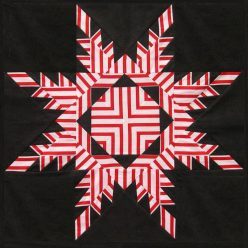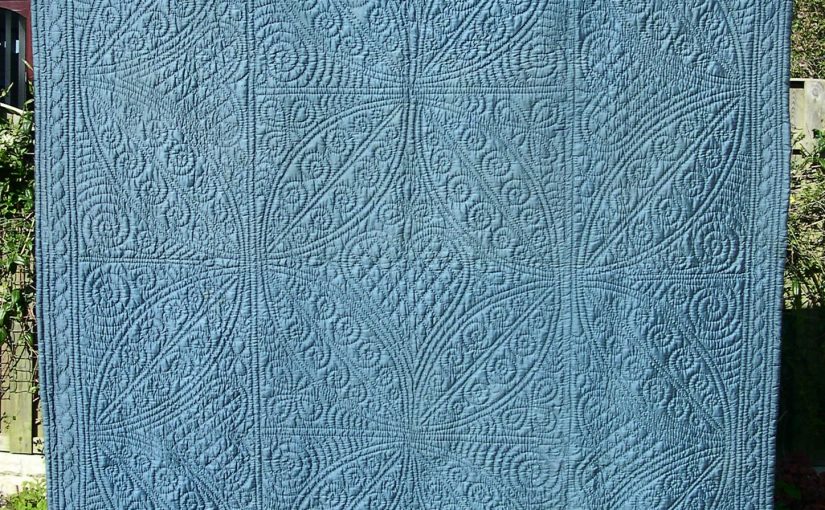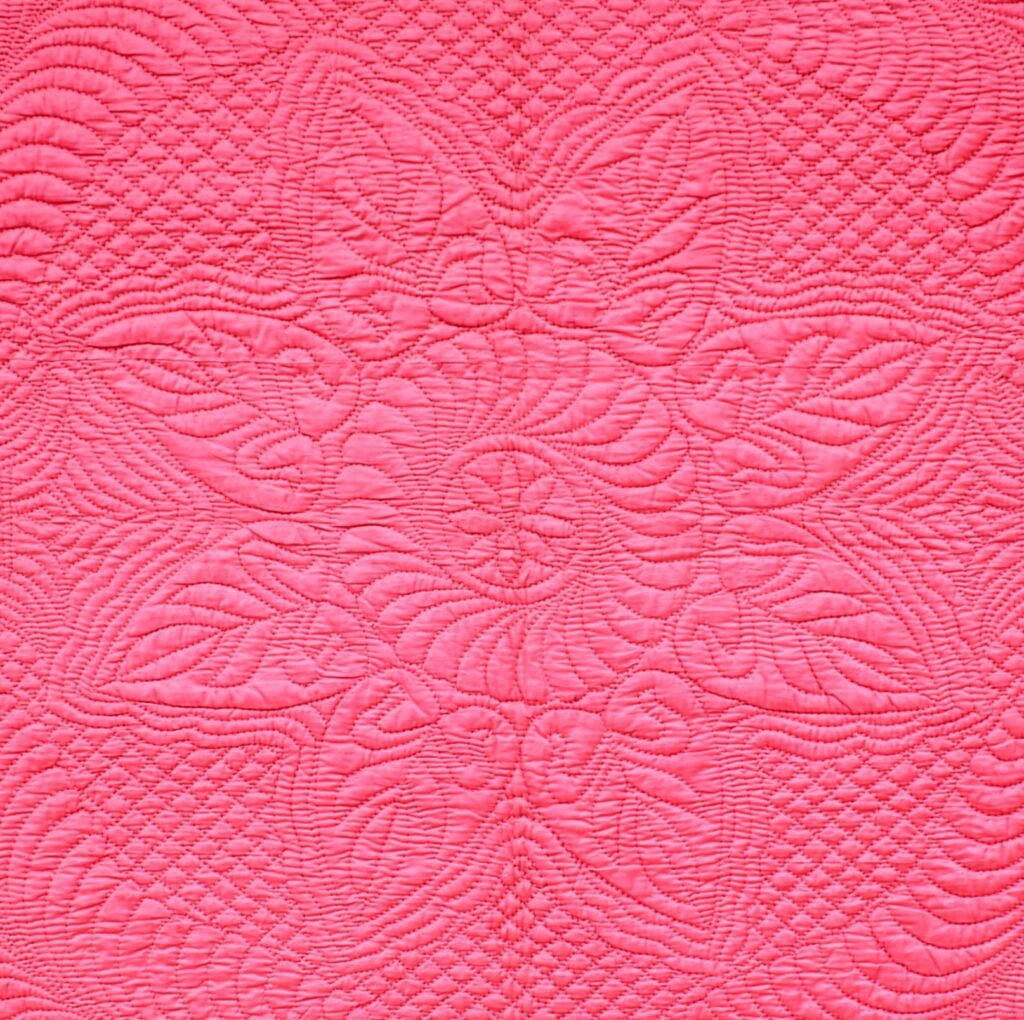I love wholecloth quilts, which are probably the most typical British style.They have no patchwork or applique, but just rely on the texture created by hand quilting over the entire design.
Click on the links or the photos to go to a page about each individual quilt, with more information, and plenty of close-up photos.
In looking at wholecloth designs, remember that they were of course designed to be seen on beds, rather than displayed vertically as on most of my photos.
The usual framework consisted of a large central design which would be displayed on the top of the bed, surrounded by one or more borders which would hang down at the side.
Regional variations
Two regions of the United Kingdom have particularly strong traditions of wholecloth quilting; Wales, and the North East of England. The overall style and the motifs used from each region can easily be recognised.
On Welsh quilts, these areas are always divided clearly into sections with straight lines, as on this beautiful Pink and Gold quilt:
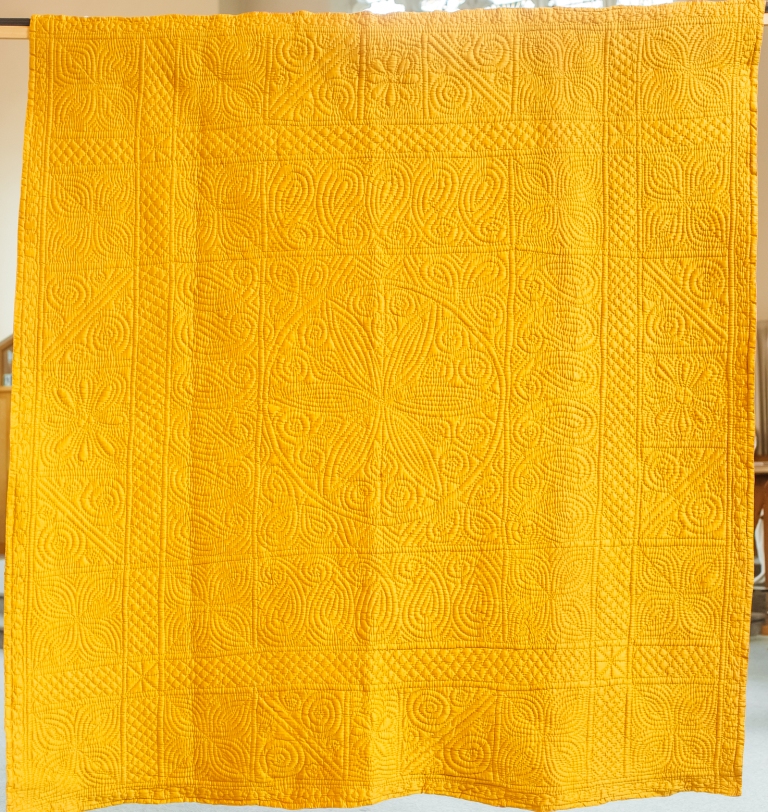
Links to pages with details of more individual quilts are shown below – but if you would prefer to watch a 16 minute video pointing out the key style features of a North Country quilt, with a comparison to this Welsh one, watch this video:
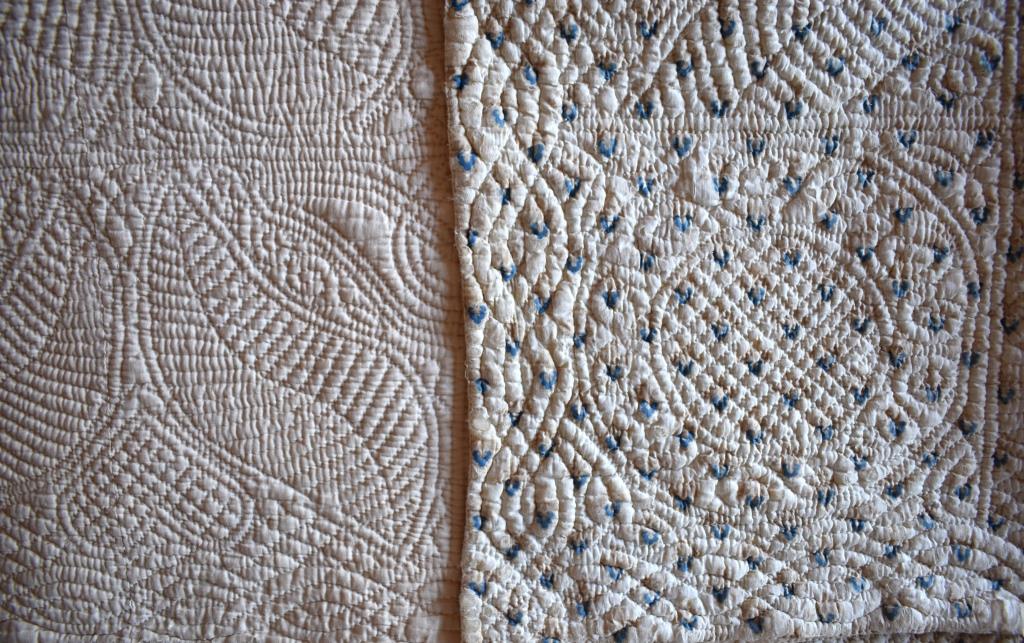
If you would like to hear me speak about a single Welsh quilt in more detail, you could access the YouTube link for a half hour study video about the Cream and Print Welsh wholecloth quilt – its free in my online shop .
More Welsh wholecloth quilts:
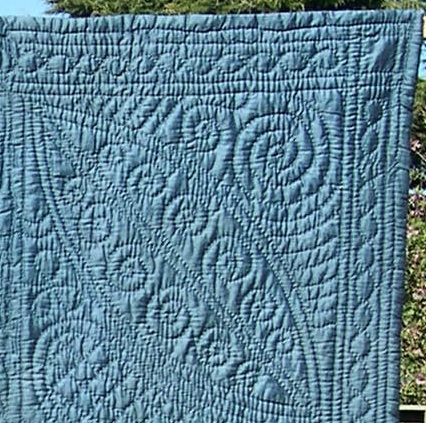
Click here to go to the webpage for the Blue Paisley Welsh wholecloth, a lovely example.
An older Welsh quilt with plenty of intricate designs is this one made by Q. L Jones
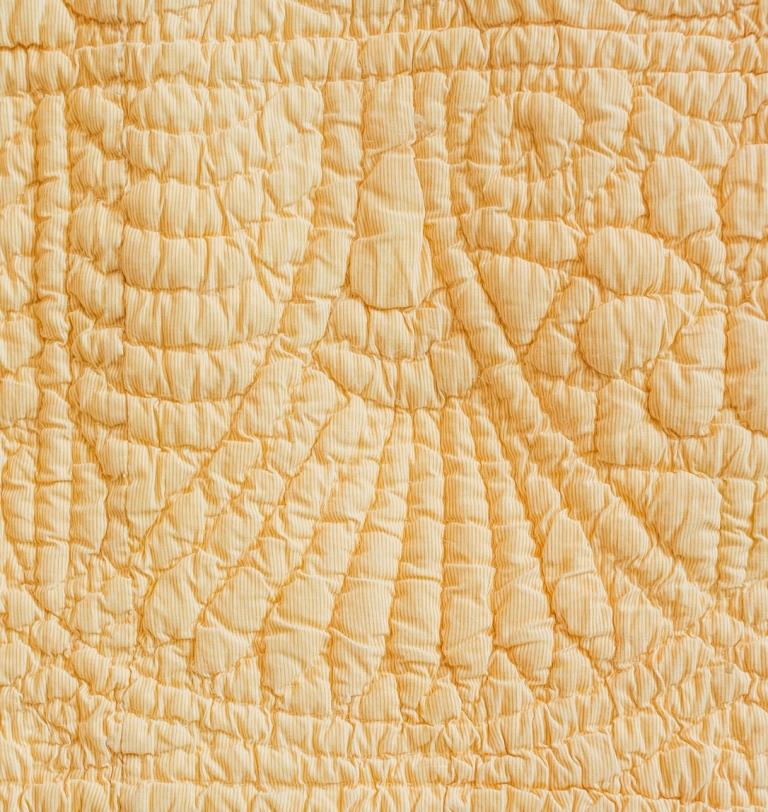
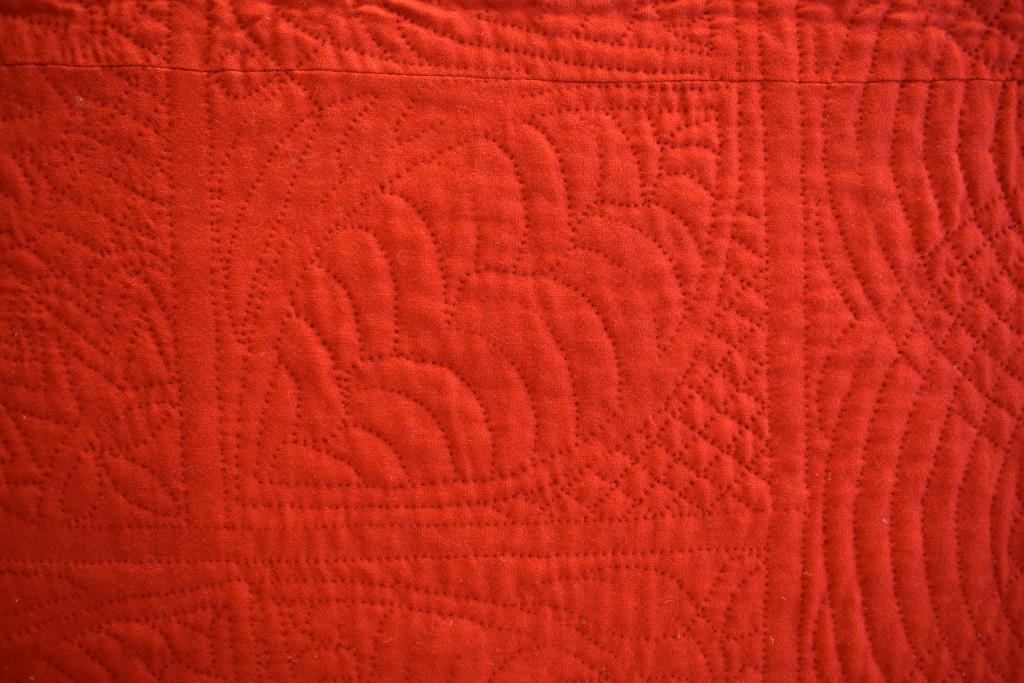
I have another dramatic quilt by the same maker; this one is in red Welsh wool flannel
This Green & Gold Welsh quilt is quite simple in design
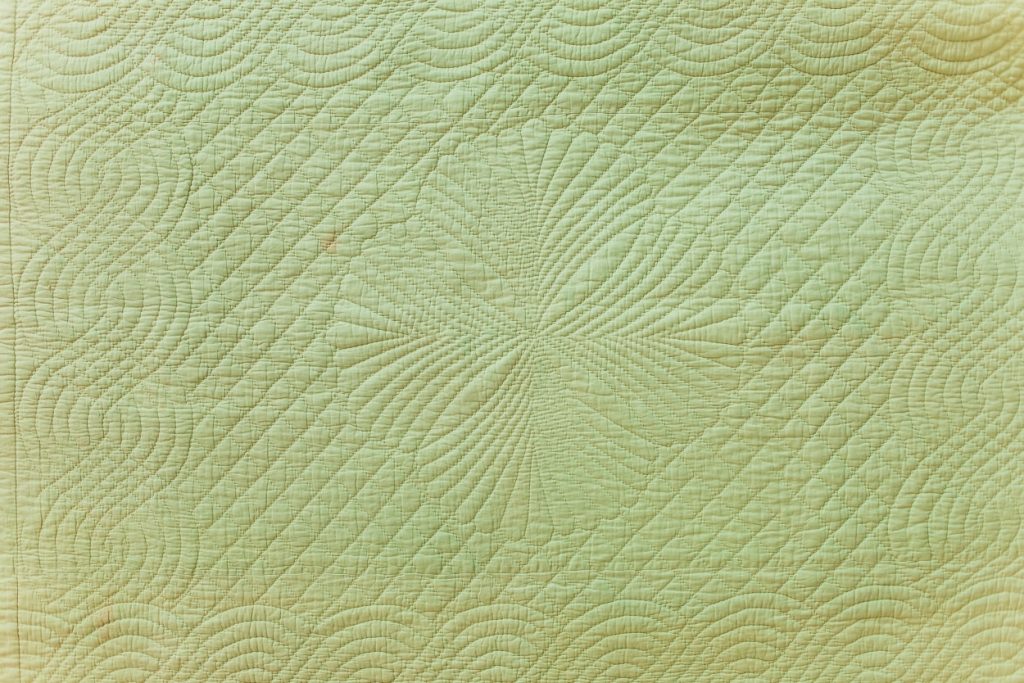
North Country wholecloth quilts
Older North Country quilts also used the delineated style, as seen on this North Country Harle Wedding Wholecloth quilt given as a wedding present in 1902:
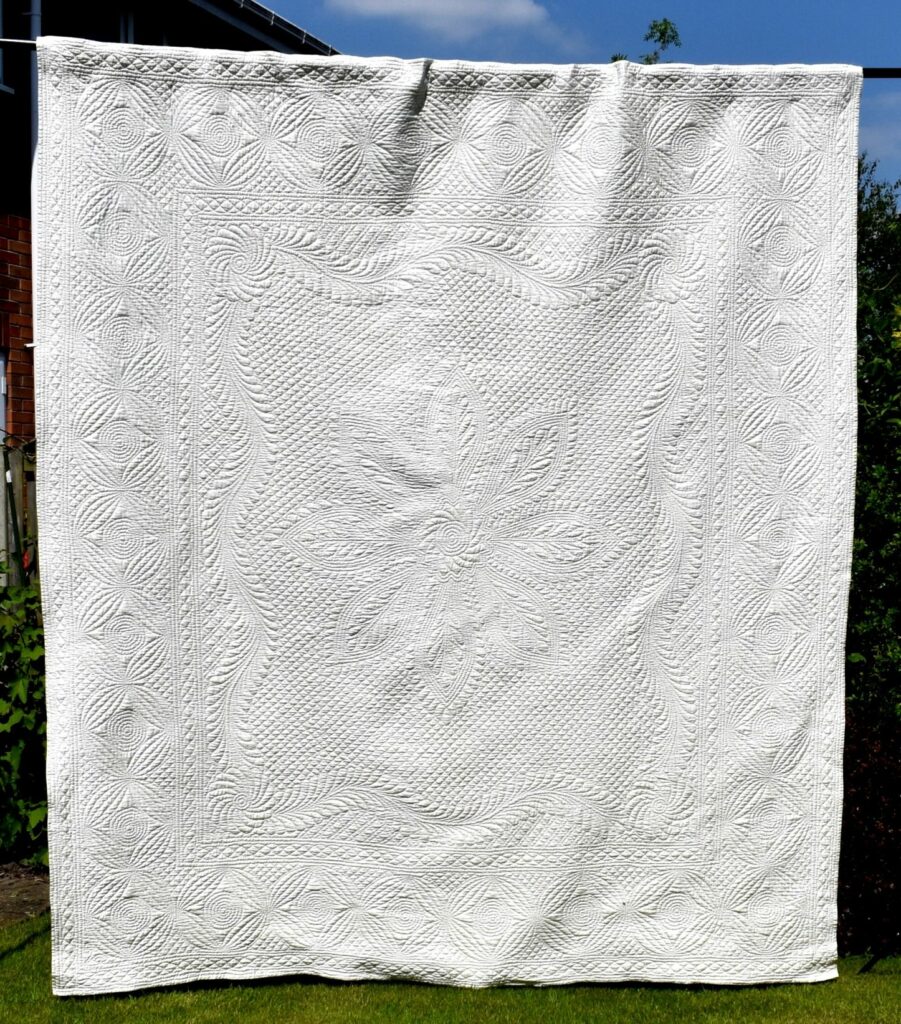
However, in the late nineteenth century, a new style developed in the North East, with the design flowing more freely between the centre and the edges.
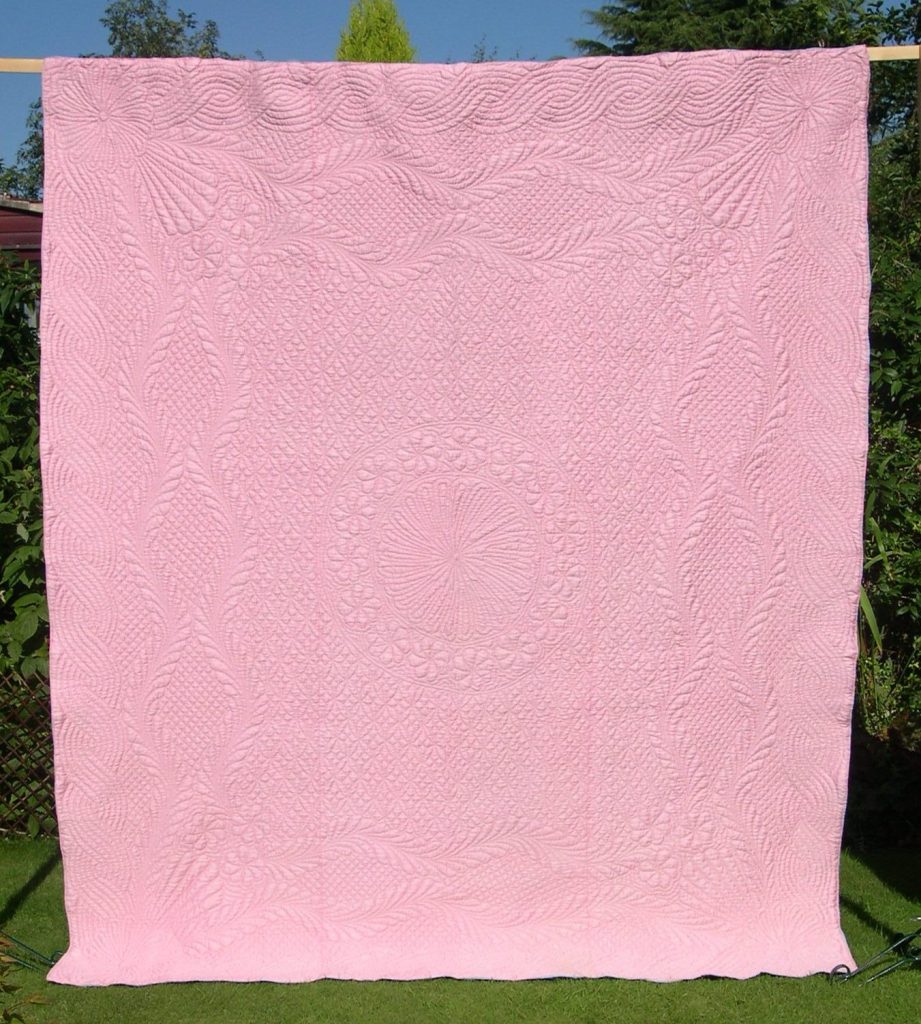
Click to see details of a typical North Country wholecloth quilt; the Yellow Lovers Knot
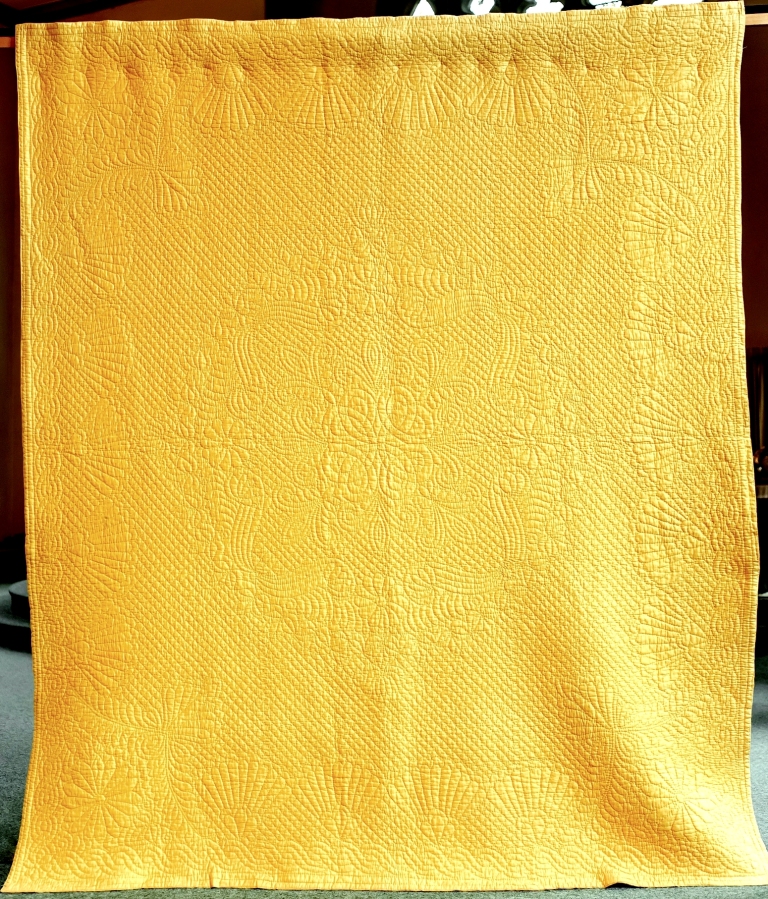
I am particularly interested in what happens to border quilting designs at the corners. After winning the Amy Emms bursary in 2016, I researched this more, and presented my findings in a display at the annual conference of the Quilters’ Guild, and also in their quarterly magazine.To find out more about this, click to look at the Border Corner Quilting Designs page
or to download the article, from The Quilter, Winter 2017, issue 153 click on this link: TheQ_#153_12–14_Amy Emms Bursary.
To see more quilts, click here to see Strippy quilts
Or go back to Antique quilts
Or to My Designs
If you are interested in the heritage of British quilting, then why not look at the extensive collection owned by the Quilters Guild of the British Isles?
For those particularly interested in studying more, the British Quilt Study Group is to be recommended.
